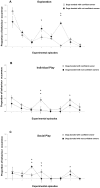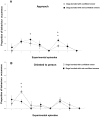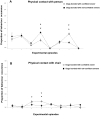"Like owner, like dog": correlation between the owner's attachment profile and the owner-dog bond
- PMID: 24205235
- PMCID: PMC3813613
- DOI: 10.1371/journal.pone.0078455
"Like owner, like dog": correlation between the owner's attachment profile and the owner-dog bond
Abstract
During recent years, several studies have revealed that human-dog relationships are based on a well-established and complex bond. There is now evidence suggesting that the dog-human affectional bond can be characterized as an "attachment". The present study investigated possible association between the owners' attachment profile assessed throughout a new semi-projective test (the 9 Attachment Profile) and the owner-dog attachment bond evaluated using a modified version of those used in studying human infants: Ainsworth's "strange situation". The findings represented the first evidence for the presence of a correlation between the owners' attachment profile and the owner-dog attachment bond throughout procedure and behavioural analyses involving controlled observations.
Conflict of interest statement
Figures





References
-
- Bowlby J (1973) Attachment and loss. Loss: Sadness and depression (New York: Basic Books), Vol 3.
-
- Bowlby J (1973) Attachment and loss. Separation: Anxiety and anger (New York: Basic Books), Vol 2.
-
- Bowlby J (1982) Attachment and loss. Attachment (2nd Ed.) (New York: Basic Books, new printing in 1999, with a foreword by Allan N. Schore; originally published in 1969), Vol 1.
-
- Ainsworth MDS, Bell SM (1970) Attachment, exploration, and separation: illustrated by the behaviour of one-year-olds in a strange situation. Child Devel 41: 49–67. - PubMed
-
- Ainsworth MDS (1989) Attachments beyond infancy. Am Psychol 44: 709–716. - PubMed
MeSH terms
LinkOut - more resources
Full Text Sources
Other Literature Sources

